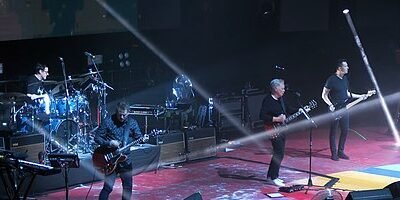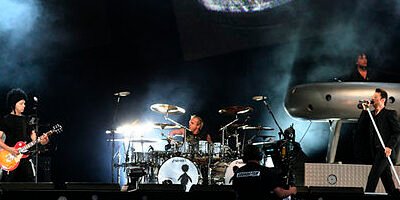
Pioneering Synth Soundscapes and Dance-Rock Fusion

From the ashes of Joy Division, the iconic British band New Order emerged as a pioneering force in the post-punch electronic movement merging new wave, electronic, and dance music. Formed in 1980, in Manchester, England, the band carved a unique path through the evolving music landscape, creating a lasting influence that continues to resonate in modern music.
Formation and Early Years
New Order was formed by the surviving members of Joy Division – Bernard Sumner (vocals, guitars, synthesizers), Peter Hook (bass guitar, backing vocals), and Stephen Morris (drums, synthesizers), following the tragic suicide of Joy Division lead singer Ian Curtis. They were soon joined by Gillian Gilbert (keyboards, guitars) who completed the quartet, broadening their sound palette.
The transition from Joy Division to New Order marked a significant shift from the dark, gloomy post-punk aesthetics toward a more upbeat and electronic sound. In 1981, New Order released their debut album, “Movement”, which served as a bridge between Curtis’s poignant verbosity and a burgeoning interest in the fledgling sounds of electronic synthesis replicated straight from the dance floors.
Innovative Sound and Discography
It was their next album, “Power, Corruption & Lies” (1983), that fully broke the mold. The record circumvented rock vibes for a synthetic texture that was complex and danceable. Instrumental to this was their use of the then revolutionary synthesizer and sequencer technology, allowing them to blend minimalistic beats with a melodic, new wave approach. This album included the breakout single “Blue Monday”, which remains one of the best-selling 12-inch singles of all time. With its hypnotic beats and pioneering electronic sound, “Blue Monday” laid down the blueprint for dance music in the 1980s and beyond.
Throughout the 1980s, New Order remained at the forefront of the synth-pop and electronic movement, releasing critically acclaimed albums like “Low-Life” (1985) and “Technique” (1989). Each album marked an evolution in their sound, paradoxically achieving greater synthesis between electronic and rock elements.
Side Projects and Evolution
Members of New Order have dabbled in various side projects that have allowed them different avenues of musical exploration. Notably, Sumner teamed up with Smiths guitarist Johnny Marr to form Electronic, an alternative dance supergroup, which furthered Sumner’s reach and influence within the electronic music scene.
In the late 90s and early 2000s, as the popularity of Britpop waned, New Order took a hiatus but returned with new albums like “Get Ready” (2001) and “Waiting for the Sirens’ Call” (2005), which saw them returning to a more guitar-driven rock sound. After Hook’s departure in 2007, the band continued to tour and record, notably releasing “Music Complete” (2015), which was seen as a return to their classic sound, blending their signature mix of synth-pop and electronic dance music.
Legacy and Influence
New Order’s influence on music is profound, shaping many facets of the electronic, rock, and dance genres. They pioneered the post-punk movement’s shift toward more expansive electronic music and were among the first bands to successfully blend post-punk with new wave and dance music, paving the way for future genre-blending artists. Bands like Pet Shop Boys, LCD Soundsystem, and Radiohead have cited New Order as an influence in their music’s electronic leanings.
Their sound continues to reverberate through various music forms, including synth-pop, techno, and indie rock. New Order’s ability to cross over from post-punk gloom into vibrant synth-pop is emblematic of their adaption and innovative approach to music, making them one of the enduring bands from the 1980s that continues to be relevant in the modern music scene.
In sum, New Order is not just a band but an enduring musical phenomenon whose explorations and innovations continue to impact artists and listeners alike, transcending the limitations of time and genre to maintain their position as pioneers of the synth-driven soundscape.
